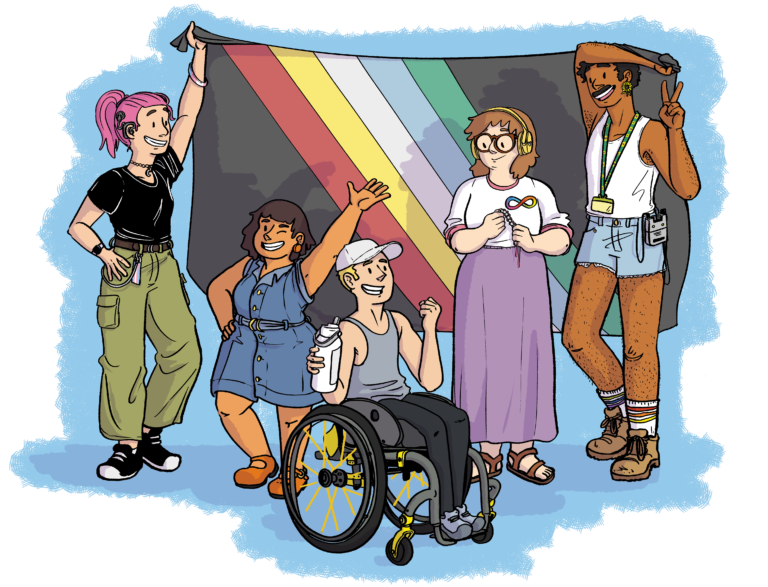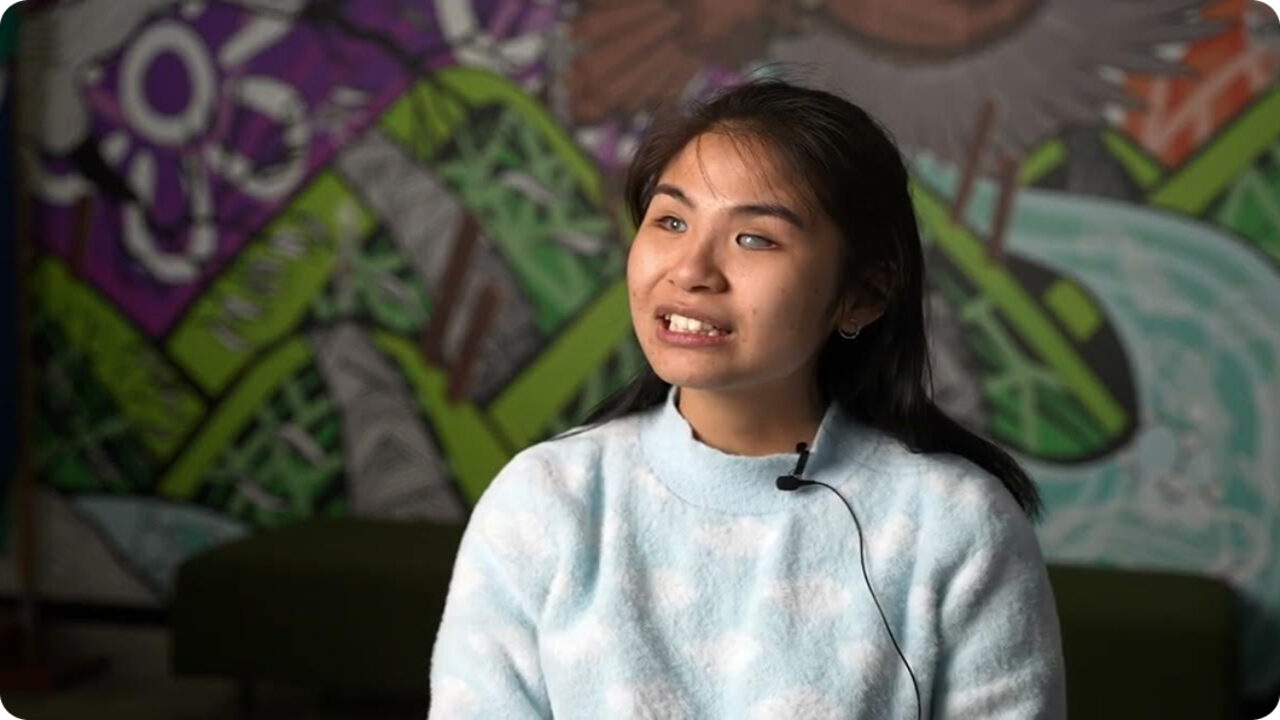Embracing disability pride as an NDIS service provider
Disability pride is the concept of disabled people embracing disability as a part of who they are.
Disability pride can also mean feeling confident, not trying to hide a disability, and rejecting ableism.
Disability pride promotes community and solidarity, encouraging disabled people to be unapologetically themselves.
Many people see their disability as an important part of their identity.
-
Defining Disability Pride
-
Disability Pride Resources
On this page

Disabled young people answer: What is disability pride?
Check out this video of disabled young people talking about what disability pride means to them.

Why disability pride matters for young people
It’s especially important for disabled young people to feel this kind of pride.
When they grow up seeing their disability as a positive part of who they are, it can help them feel more confident, empowered, and proud of who they are—including their disability.
It supports them to build a strong sense of identity, understand their rights, and speak up when something isn’t right.
By challenging stigma and pushing for full inclusion, disability pride encourages young people to stand up for themselves and others, and to make their own choices with confidence.

Why is it important for NDIS providers and workers to embrace disability pride?
Check out this video of disabled young people sharing why it’s important for NDIS service providers and workers to embrace disability pride.
Benefits of embracing disability pride as an NDIS provider
Here are some of the benefits of embedding disability pride in your organisation.
Disability pride promotes self-worth, confidence, and a positive identity among disabled people. When NDIS service providers and workers celebrate and respect disability pride, it helps young people feel seen, valued, and empowered.
When young people feel proud of who they are, they can feel more confident to raise concerns—and speaking up early means problems can be addressed sooner, before they become more serious.
Disability pride can also reduce discrimination and exclusion, leading to fewer complaints.
Embedding disability pride encourages a workplace culture where diversity is respected and celebrated. This can lead to more inclusive services and better supports for disabled young people.
Disability pride is grounded in the idea that disabled people have the right to live with dignity, access opportunities, and be fully included in society. Promoting pride supports human rights and challenges ableism and discrimination.
When workers understand and embrace disability pride, they’re more likely to provide respectful, person-centred, and empowering support. This aligns with the NDIS Code of Conduct and improves outcomes for disabled young people.
A culture that embraces disability pride can be uplifting for workers too. It fosters purpose, shared values, and a sense of belonging.
More people—including NDIS participants, families, and advocates—expect disability organisations to go beyond compliance and actively support inclusion and disability pride. Being a leader in this space builds trust and a strong reputation.
Disabled young people told us they want support from NDIS providers and workers who embrace disability pride—and they’re more likely to keep using services when they feel accepted, empowered, and treated with respect.
How to embed disability pride in your organisation
NDIS service providers and workers can embrace disability pride in meaningful, practical ways that create more inclusive and empowering supports for disabled young people. Here are some ways to embrace disability pride:
Employ disabled people in leadership and decision-making roles in your organisation.
Co-design with disabled young people when designing or reviewing your services.
Meaningful involve disabled young people in decisions about their lives (including their disability supports).
Remember, disabled young people are the experts on disabled young people.
Visit YERP (Youth Engagement Resource Platform) for resources to support meaningful engagement and good practice with young people.
Download JFA Purple Orange’s Guide to co-design with people living with disability.
Call out disrespectful language or low expectations.
Promote a strengths-based view of disability—not one that sees it as a problem to be fixed.
To learn more, visit our Understanding ableism webpage.
Celebrate key disability dates (e.g. International Day of People with Disability, Disability Pride Month).
Share stories and achievements of disabled people within your organisation and community.
Learn about disability pride and culture from the disability community. Follow disabled content creators and check out the disability pride resources we’ve shared on this page.
Make spaces physically, socially, and culturally welcoming for disabled young people.
Use accessible communication, and check that your materials and programs reflect diversity in disability, gender, culture, and identity.
Learn more in the Communicating with disabled young people section of our website.
Encourage disabled young people to be proud of who they are and speak up for what they need.
Provide support in a way that builds their independence and empowers them to be meaningfully involved in decisions about their lives and disability supports.
Embed disability pride in organisational values, including in your Statement of Commitment, and Code of Conduct.
Offer training and discussions with workers about disability rights, history, and pride.
Be open to learning and listening to disabled young people.
Demonstrate disability pride by using respectful language, acting with authenticity, and actively supporting the empowerment and inclusion of disabled young people in visible and meaningful ways.
Disability pride resources
Check out these disability pride resources created by disabled young people.
-
Disability pride resources
These resources were created by disabled young people for employers and the wider community. There's videos, guides, and answers to commonly asked questions. -
Disability pride gallery
Over 30 disabled young people share what disability pride means to them. Check out their artwork, videos, music, comics, poetry, written pieces and more!